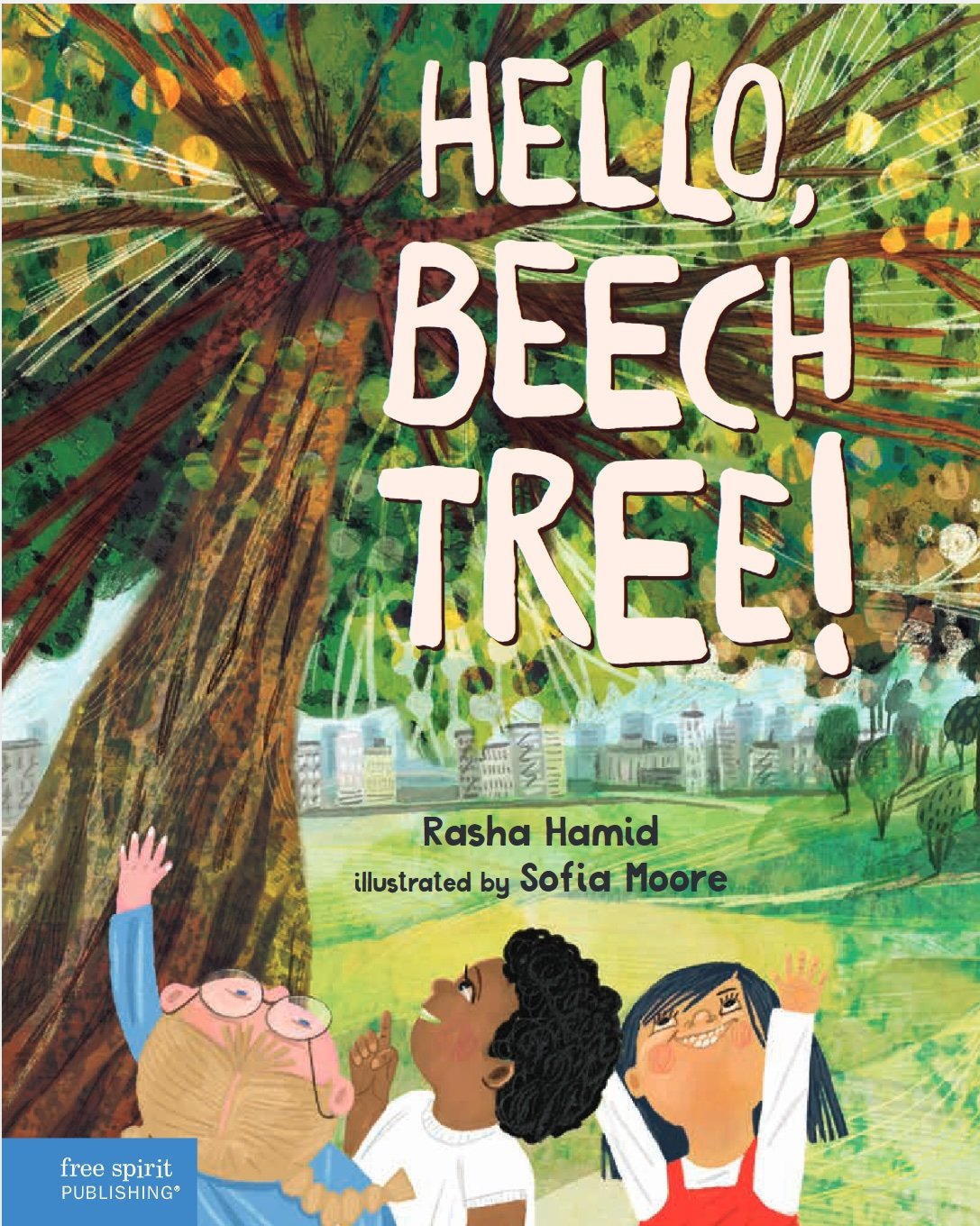Process Talk With Jen: Rasha Hamid on Hello, Beech Tree
[Posted by Jen Breach for Writing With a Broken Tusk]
In a guest post about writing nonfiction for children, Rasha Hamid wrote “Historian Robin D. G. Kelley coined the term freedom dreaming to describe the power of imagination as a strategy for collective liberation - imagining the world as it should be so we can make it so. Powerful nonfiction writing at its best stems from freedom dreams.” And Rasha’s nonfiction–including How to Bird and the brand new Hello, Beech Tree!–is certainly powerful.
[Jen] You describe yourself as an educator-activist and a maker. Can you reflect on what the picture book form offers you that other mediums and spaces (say, a classroom) don’t?
[Rasha] One thing to know is that I just love words and images, be they in books or on walls or in music. Another thing to know is that I process slowly. In order to understand an idea well or express it with clarity, I need to turn it over in my mind and talk about it for an extended period of time. The process of making a picture book allows me to take my time figuring out precisely what I want to convey. My editor, Alison Behnke, pushes me to question and tighten each phrase. In my spoken language, I sometimes struggle with brevity. There can be so many ideas flooding my brain. But on paper, (or on the computer, as the case may be), I can put it all down, and then reread and revise and remove. I can read aloud and listen, share my work and get feedback.
Picture books are also such an important part of any classroom. Sometimes, as educators, we might not have the time or space to craft precisely the message we want to share about a topic. Or to find the text that conveys everything we want to convey. Picture books allow me, for a moment, to teach so many children and support so many educators I may never even meet.
[Jen] Both How to Bird and Hello, Beech Tree! are about environmental justice in urban public natural spaces. In Hello, Beech Tree! a class of students mobilizes when their favorite tree in the park is cut down, and your author’s note encourages readers to take similar action if they observe that their community does not have enough access to green spaces. In How to Bird, the invitation to engage with nature is so direct: “Anyone can be a birder!” and, after listing birder tools, “But all you really need is YOU.” How did you come to frame this book as a “how to” guide rather than a more traditional narrative?
[Rasha] I was photographing a red-tailed hawk that was perched high in a tree in Central Park in New York City. Someone asked what I was looking at and I helped them locate the hawk. They asked how I’d noticed it and I realized that what was obvious to me about spotting birds wasn’t obvious to everyone. And they were missing amazing birds, right there in front of them! I’d already been thinking about using my birding photographs in a picture book of some kind, but that interaction helped me solidify what I wanted to share.
Also, writing instructional texts with kindergarteners and first graders is one of my absolute favorite things! Some memorable texts I’ve seen kids write include How to Go to the Corner Store by Taraji-Marie, How to Say /t/ by Finn, and How to Be Kind by the Beech Class. Creating an inclusive text that could be used in classrooms as a mentor text for this work was an added bonus.
Photo used courtesy of the author
[Jen] Each of your books has in some way come from the young students you teach in New York City public schools. For example, you wrote Kadisa كديسة. when you couldn’t find any children’s nonfiction about Sudan’s beauty. Do you consider your students to be collaborators? Or is there another way you think about their contribution?
[Rasha] I actually created the first version of Kadisa كديسة, which is different from the version I published, with my second graders in Khartoum, Sudan. But yes, most of my career, I’ve been in New York City public schools. When I’m writing a book, I’m drawing on everything I’ve learned about communicating with children, and about the kinds of books that make engaging instructional texts. I almost hear the wonderings and excitement of past and present students in my mind as I write. So, in that way, it’s a collaboration.
They’re also my inspiration. I want to make books that make children (and grownups!) feel seen, hopeful, and engaged. I especially think about students that struggle in schools, and how to show them that they’re just right, as they are. I want them to bird and plant trees, and to notice how the living beings around them find what they need to survive - or don’t. I want to make the world better for them, and help them learn how to make it better, more just, and more sustainable for themselves and the generations that follow.
After Hello, Beech Tree, my next picture book will be Eternally Autistic, and I’m so excited to share a joyful and straightforward text about autism, inspired by my own child, my childhood, and so many wonderful autistic students and loved ones.
[Jen] What an important freedom dream–I’m already looking forward to it. Thank you, Rasha.


